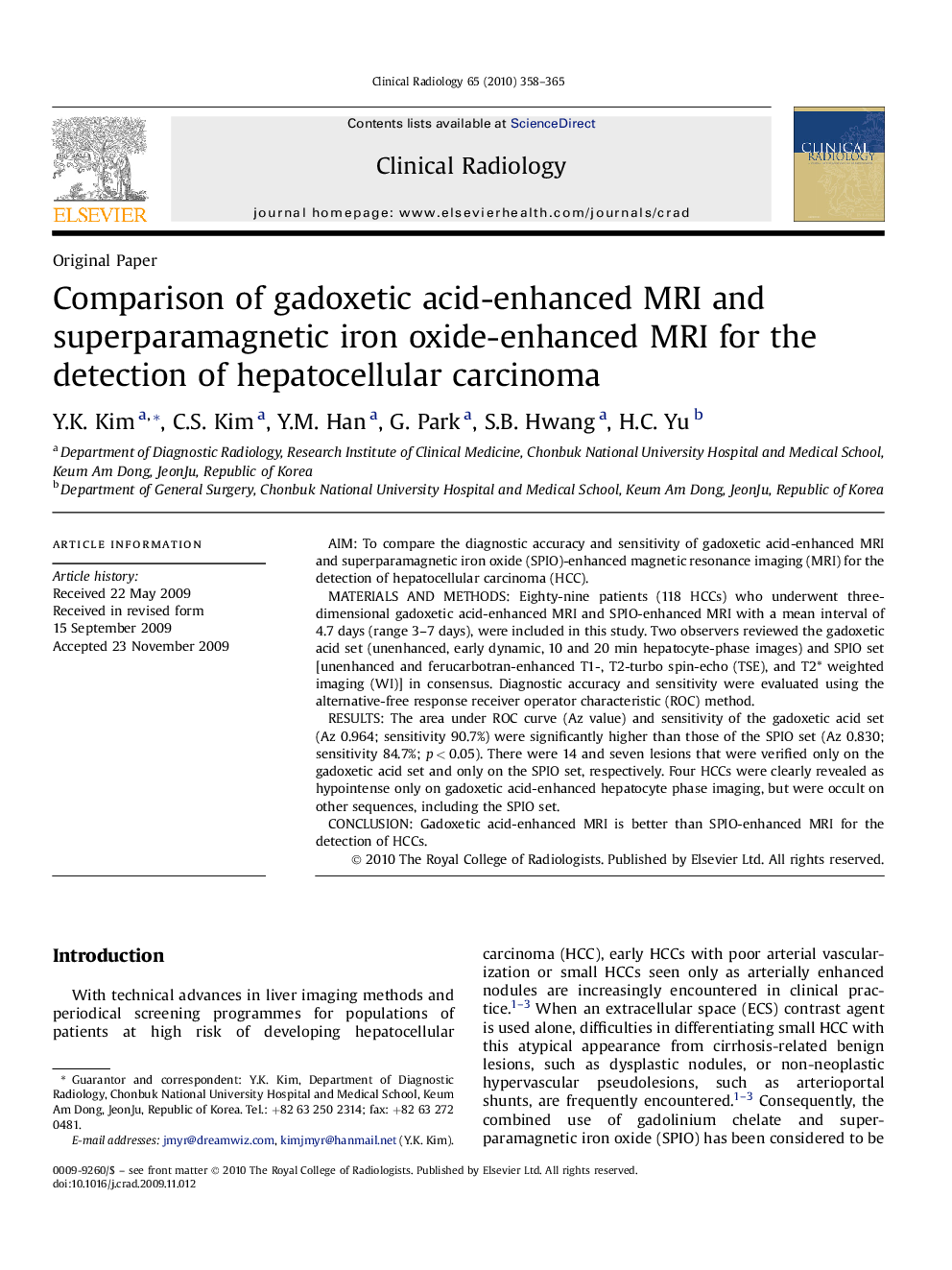| Article ID | Journal | Published Year | Pages | File Type |
|---|---|---|---|---|
| 3982530 | Clinical Radiology | 2010 | 8 Pages |
AimTo compare the diagnostic accuracy and sensitivity of gadoxetic acid-enhanced MRI and superparamagnetic iron oxide (SPIO)-enhanced magnetic resonance imaging (MRI) for the detection of hepatocellular carcinoma (HCC).Materials and methodsEighty-nine patients (118 HCCs) who underwent three-dimensional gadoxetic acid-enhanced MRI and SPIO-enhanced MRI with a mean interval of 4.7 days (range 3–7 days), were included in this study. Two observers reviewed the gadoxetic acid set (unenhanced, early dynamic, 10 and 20 min hepatocyte-phase images) and SPIO set [unenhanced and ferucarbotran-enhanced T1-, T2-turbo spin-echo (TSE), and T2* weighted imaging (WI)] in consensus. Diagnostic accuracy and sensitivity were evaluated using the alternative-free response receiver operator characteristic (ROC) method.ResultsThe area under ROC curve (Az value) and sensitivity of the gadoxetic acid set (Az 0.964; sensitivity 90.7%) were significantly higher than those of the SPIO set (Az 0.830; sensitivity 84.7%; p < 0.05). There were 14 and seven lesions that were verified only on the gadoxetic acid set and only on the SPIO set, respectively. Four HCCs were clearly revealed as hypointense only on gadoxetic acid-enhanced hepatocyte phase imaging, but were occult on other sequences, including the SPIO set.ConclusionGadoxetic acid-enhanced MRI is better than SPIO-enhanced MRI for the detection of HCCs.
